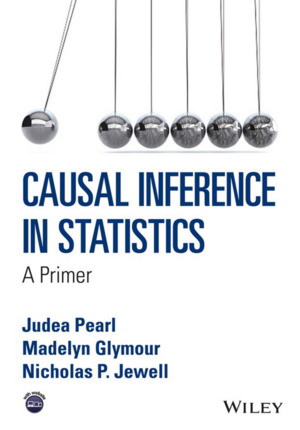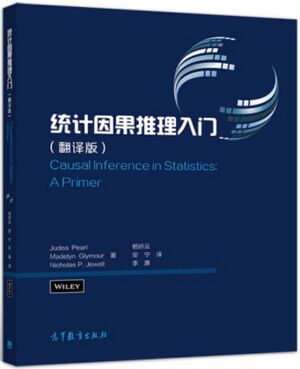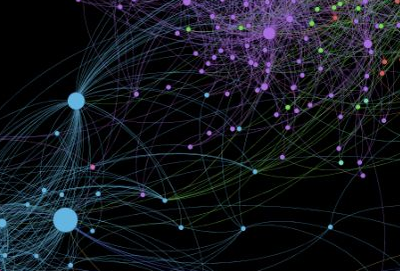Causal Inference in Statistics: A Primer
内容简介
因果性是理解和应用数据的核心,如果无法从数据中获知因果关系,则甚至无法回答诸如“治疗方案对患者有益还是有害”这类基本问题。虽然现在有很多关于数据分析统计方法的教科书,但到目前为止还没有适合初学者水平的书,介绍如何从数据中快速梳理因果信息的各种方法。
本书弥补了这种缺憾。书中使用简单的实例与朴实的语言介绍了如何定义因果关系,在各种情形下估计因果参数所必需的假设,如何数学化地表示这些假设,这些假设是否有可检测的蕴涵,如何预测干预的效应,以及如何进行反事实推理等。这些都是有兴趣用统计方法回答因果问题的读者需要掌握的基本工具。
基本信息
书名:Causal Inference in Statistics: A Primer
作者:Judea Pearl/Madelyn Glymour/Nicholas P. Jewell
中文翻译版:统计因果推理入门
译者: 杨矫云 / 安宁 / 李廉
作者介绍
Judea Pearl是美国加利福尼亚大学洛杉矶分校计算机科学和统计学的教授,他是认知系统实验室负责人,从事人工智能、因果推理和科学哲学的研究。Pearl 是《因果推理期刊》的联合创始人和编辑,著有三本关于推理领域的里程碑式著作。他的著作《因果关系:模型、推理和推断》(剑桥出版社,2000,2009)介绍了现代因果分析中使用的许多方法。该书获得了伦敦经济学院拉卡托斯奖( Lakatos Award),并被超过13000篇科学出版物引用。Pearl 是美国国家科学院院士、美国国家工程院院士、美国人工智能协会的创始会士。由于对概率和因果推理的基础性贡献,Pearl 囊获了包括以色列理工学院的哈维奖(Harvey Prize)和 ACM 图灵奖在内的众多奖项。
Madelyn Glymour是卡内基-梅隆大学的数据分析师、加利福尼亚大学洛杉矶分校认知系统实验室的科学作家和编辑。研究兴趣在因果发现以及能够让广大读者理解复杂概念所蕴含的艺术。
Nicholas P. Jewell是加利福尼亚大学伯克利分校生物统计学和统计学教授。自从1981年进入伯克利分校后,先后担任多个学术和行政职务,特别是1994-2000年间担任了副教务长。他还曾在爱丁堡大学、牛津大学、伦敦卫生与热带医学院以及京都大学担任学术职务。2007年,他在意大贝拉吉奥洛克菲勒基金研究中心做访问学者。Jewell 是美国统计协会、数理统计研究所和美国科学促进协会(AAAS)会士。曾经获得斯内德克奖和哈佛大学统计科学马文·泽伦领导奖。Jewell 目前是《美国统计协会会刊:理论与方法》杂志编辑、美国科学促进会统计学分会的主席。他的研究重点是把统计方法应用到传染病和慢性病流行病学、药物安全性评估、比较分析和人权领域。
内容目录
Preface xi
1 Preliminaries: Statistical and Causal Models 1
1.1 Why Study Causation 1
1.2 Simpson’s Paradox 2
1.3 Probability and Statistics 9
1.3.1 Variables 10
1.3.2 Events 11
1.3.3 Conditional probability 11
1.3.4 Independence 13
1.3.5 Probability distributions 14
1.3.6 The law of total probability 15
1.3.7 Using Bayes’ rule 18
1.3.8 Expected values 22
1.3.9 Variance and covariance 24
1.3.10 Regression 27
1.3.11 Multiple regression 31
1.4 Graphs 33
1.5 Structural Causal Models 36
1.5.1 Modeling causal assumptions 36
1.5.2 Product decomposition 40
2 Graphical Models and Their Applications 47
2.1 Connecting Models to Data 47
2.2 Chains and Forks 48
2.3 Colliders 55
2.4 d-Separation 62
2.5 Model Testing and Causal Search 66
3 The Effects of Interventions 71
3.1 Interventions 71
3.2 The Adjustment Formula 74
3.2.1 To adjust or not to adjust? 79
3.2.2 Multiple interventions and the truncated product rule 81
3.3 The Back-Door Criterion 82
3.4 The Front-Door Criterion 89
3.5 Conditional Interventions and Covariate-Specific Effects 95
3.6 Inverse Probability Weighing 98
3.7 Mediation 103
3.8 Causal Inference in Linear Systems 107
3.8.1 Structural vs. regression coefficients 110
3.8.2 The causal interpretation of structural coefficients 111
3.8.3 Identifying structural coefficients and causal effect 113
3.8.4 Mediation in linear systems 119
4 Counterfactuals and their Applications 123
4.1 Counterfactuals 123
4.2 Defining and Computing Counterfactuals 126
4.2.1 The structural interpretation of counterfactuals 126
4.2.2 The fundamental law of counterfactuals 130
4.2.3 From population data to individual behavior – an illustration 131
4.2.4 The three steps in computing counterfactuals 133
4.3 Non-Deterministic Counterfactuals 136
4.3.1 Probabilities of counterfactuals 136
4.3.2 The Graphical representation of counterfactuals 141
4.3.3 Counterfactuals in experimental settings 144
4.3.4 Counterfactuals in linear models 147
4.4 Practical uses of counterfactuals 149
4.4.1 Recruitment to a program 149
4.4.2 Additive interventions 152
4.4.3 Personal decision making 155
4.4.4 Sex discrimination in hiring 158
4.4.5 Mediation and path-disabling interventions 159
4.5 Mathematical Tool Kits for Attribution and Mediation 161
4.5.1 A tool kit for attribution and probabilities of causation 162
4.5.2 A tool kit for mediation 167
References 176
资源获取
相关wiki
编者推荐
豆瓣书评
一次减法带来的科学革命
“一直都不太看好所谓的归因分析, 也不太理解为什么归因分析会作为图灵奖评审标准. 归因分析其实就是概率减法而已, 这是个再简单不过的概念.归因分析近年来受到了互联网公司的关注. Uber 就是其中之一.理论科学有的时候只要稍稍有一些创新概念, 就会带来应用领域的革命, 所以不要放过自己每一次的灵光一现.” ——Hao
Goodreads书评
“I read this book because I was so impressed with the importance of causal inferencing from data, as Pearl has developed it, in his more popular book, "The Book of Why". But that book didn't present enough detail for me to actually apply causal analysis to my own data. I hoped that a self-styled "Primer" would fill that gap.
Unfortunately, this book did not help......” ——James Foster
“......So yes, I guess I'm drinking the Pearl Kool-aid. This book deserves such praise in my opinion, though, for having the informative lack of fluff of a textbook without the soporific dryness of one” ——Anthony DiGiovanni
集智俱乐部读书会推荐
因果推理与机器学习读书会
大数据时代的下一场变革——因果革命正在酝酿之中,通过融合因果推理和机器学习而构建出来的Causal AI系统,有望奠定强人工智能的基石。集智俱乐部联合北京智源人工智能研究院,邀请了一批对因果科学与Casual AI感兴趣的研究者,开展为期2-3个月的系列线上读书会,研读经典和前沿论文,并尝试集体撰写一部书籍。
集智俱乐部相关文章
图模型与因果推理基础- SCM框架和Do-Calculus
- 本文主要串讲了Pearl因果识别框架的基础知识,包括图模型、结构因果模型的范式,三种识别策略,以及如何运用do- calculus的三种规则来进行因果识别。本篇内容整理自因果科学读书会第一季。
第二种想象力:社会科学中的因果推断
- 本文中南京大学陈云松教授从“因果”和“数据”两个维度,用因果推断、大数据和机器学习等方面的系列研究案例,阐释第二种想象力的八类思维面向。
因果科学的学习路线图
- 本文主要根据对因果推断引擎的介绍,为关注因果科学领域的初学者提供了完整的学习路径
本中文词条由因果读书会词条梳理志愿者一尾鱼编辑,未经专家审核,带来阅读不便,请见谅。
本词条内容源自wikipedia及公开资料,遵守 CC3.0协议。


